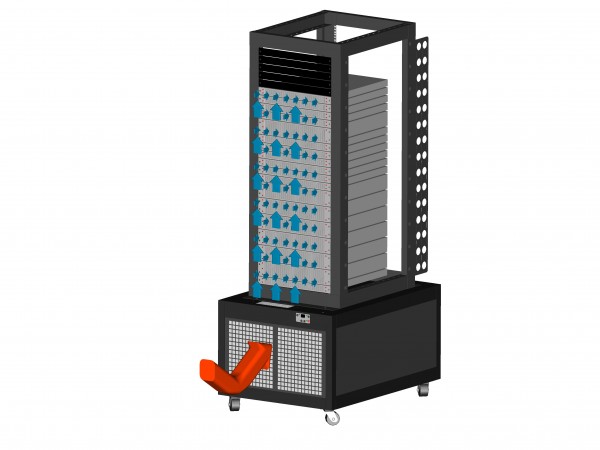Best Practice Cooling Techniques for Server Racks
There are a few methods to allay the costs of power and cooling problems if they already exist in your company’s data center. These cooling techniques for server racks include a few proven strategies that acknowledge some simple industry practices while allowing you solutions to avoid reconstructing your entire data center to alleviate insufficient cooling in your server room.
Managing air flow into hot aisle and cold aisle arrangements will certainly lower your cooling costs by increasing the utilization of air-side and water-side economizers. You can lower your fan speeds, according to the Department of Energy, by about 20 percent to 25 percent when using this method, combined with a more effective containment plan.
Setting up Your Hot Aisle and Cool Aisle Configurations
Best ways to organize hot aisle and cold aisle server rack rows is to set up your layout with alternate front to front, and back to back orientations. Using front to back aisles causes the cooling and heating panels to overwork to keep optimal functioning temperatures.
Most IT equipment takes in cold air through the unit’s front face panels, and exhaust hot air is exited from back panels of operating servers. You significantly reduce air flow efficiency when you logically place all of your equipment facing in the same direction. The temperature of rack rows front to front will be from 64º F, (10-23º C), while back to back aisles will reach up to 91º F, (33º C).
Having front to front facing servers and racks keeps cool air with cool air, facing backs of the servers keeps the hot exhaust air in aisles where the system handles this heat source. Not only does this solution conserve energy, but keeping the cool sides together prolongs the life expectancy of your servers because you are providing a less stress environment.
In addition to hot aisle/cold aisle layout strategy, recommended by the Energy Star division of the government’s EPA Dept., three other airflow management solutions are helpful:
- use proper enclosures and containment concepts
- set up variable speed fan drives
- deploy the proper devices for air flow management
Regardless of what method you choose to use for cooling your data center equipment, it is imperative that you implement a method to prevent overheating and malfunction.
2015 Rack Solutions Available
When considering cooling techniques for server racks consider available electrical enclosures. Solutions for heat dissipation for these types of plastic or metal enclosures may require a virtualization software program to read the best practices of workload systems, organizing power-loads according to server usage times.
According to the most recent, best industry research information in cooling techniques, for server racks available for the next generation proto-calls for 2015, the average blade server rack consumes 10-20 KW per rack. New generation server racks will consume only 2 KW’s per server rack. IMEX research calculations reveal that due to the rising global energy costs, spending for power and cooling data expenses will exceed equipment costs in 2015 financial budgets.
+Katrina is a product specialist, solving issues for your computer server and power and cooling needs at Racksolutions.com
